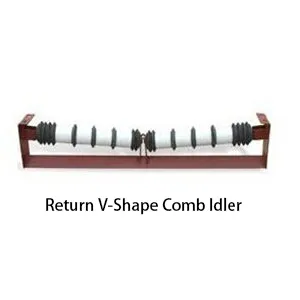 Afrikaans
Afrikaans  Albanian
Albanian  Amharic
Amharic  Arabic
Arabic  Armenian
Armenian  Azerbaijani
Azerbaijani  Basque
Basque  Belarusian
Belarusian  Bengali
Bengali  Bosnian
Bosnian  Bulgarian
Bulgarian  Catalan
Catalan  Cebuano
Cebuano  Corsican
Corsican  Croatian
Croatian  Czech
Czech  Danish
Danish  Dutch
Dutch  English
English  Esperanto
Esperanto  Estonian
Estonian  Finnish
Finnish  French
French  Frisian
Frisian  Galician
Galician  Georgian
Georgian  German
German  Greek
Greek  Gujarati
Gujarati  Haitian Creole
Haitian Creole  hausa
hausa  hawaiian
hawaiian  Hebrew
Hebrew  Hindi
Hindi  Miao
Miao  Hungarian
Hungarian  Icelandic
Icelandic  igbo
igbo  Indonesian
Indonesian  irish
irish  Italian
Italian  Japanese
Japanese  Javanese
Javanese  Kannada
Kannada  kazakh
kazakh  Khmer
Khmer  Rwandese
Rwandese  Korean
Korean  Kurdish
Kurdish  Kyrgyz
Kyrgyz  Lao
Lao  Latin
Latin  Latvian
Latvian  Lithuanian
Lithuanian  Luxembourgish
Luxembourgish  Macedonian
Macedonian  Malgashi
Malgashi  Malay
Malay  Malayalam
Malayalam  Maltese
Maltese  Maori
Maori  Marathi
Marathi  Mongolian
Mongolian  Myanmar
Myanmar  Nepali
Nepali  Norwegian
Norwegian  Norwegian
Norwegian  Occitan
Occitan  Pashto
Pashto  Persian
Persian  Polish
Polish  Portuguese
Portuguese  Punjabi
Punjabi  Romanian
Romanian  Russian
Russian  Samoan
Samoan  Scottish Gaelic
Scottish Gaelic  Serbian
Serbian  Sesotho
Sesotho  Shona
Shona  Sindhi
Sindhi  Sinhala
Sinhala  Slovak
Slovak  Slovenian
Slovenian  Somali
Somali  Spanish
Spanish  Sundanese
Sundanese  Swahili
Swahili  Swedish
Swedish  Tagalog
Tagalog  Tajik
Tajik  Tamil
Tamil  Tatar
Tatar  Telugu
Telugu  Thai
Thai  Turkish
Turkish  Turkmen
Turkmen  Ukrainian
Ukrainian  Urdu
Urdu  Uighur
Uighur  Uzbek
Uzbek  Vietnamese
Vietnamese  Welsh
Welsh  Bantu
Bantu  Yiddish
Yiddish  Yoruba
Yoruba  Zulu
Zulu Feb . 10, 2025 10:12
Back to list
gravity take up pulley
Types of Take-Up Pulley A Comprehensive Guide for Industry Professionals
A linear take-up system allows the pulley to move linearly rather than pivoting. This design can be implemented using mechanical forces like gravity, screw, or plastic deformation from springs, depending on the system's requirement. Linear systems are prized for their ability to maintain constant tension while minimizing the risk of belt misalignment. Ideal for conveyor systems where maintaining a straight path is crucial, linear take-up pulleys are widely used in industries such as automotive and food processing. Factors to Consider When Selecting a Take-Up Pulley When choosing the right type of take-up pulley for your conveyor system, several factors come into play 1. Conveyor Load and Speed The nature of the materials being transported, as well as the speed at which they are moved, significantly influences the type of pulley required. High load and speed applications typically necessitate more robust systems like hydraulic take-up pulleys. 2. Space Constraints Consider the available space in your facility. Compact systems like spring-loaded take-up pulleys might be necessary where space is limited. 3. Maintenance and Adjustment Evaluate how much manual intervention is feasible for your operation. Systems like hydraulic take-up pulleys require minimal manual adjustment compared to screw take-up pulleys. 4. Environmental Conditions Harsh environments with varying temperatures and humidity can affect pulley performance. Durable materials, corrosion resistance, and reliable mechanisms should be prioritized in extreme conditions. 5. Budget Economic constraints will also dictate the choice of pulley. Evaluate the long-term operational costs versus initial investment to choose the most cost-effective solution. Understanding these factors helps in ensuring optimal performance and longevity of the conveyor system. Each type of take-up pulley offers unique benefits, and selecting the right one can result in improved efficiency, reduced downtime, and better overall performance. In conclusion, take-up pulleys are a vital component in maintaining belt tension and alignment in conveyor systems. Their selection requires careful consideration of various operational factors to ensure ideal functioning and efficiency. Professionals should evaluate their specific needs against the different types of take-up pulleys to make an informed purchase, leveraging industry expertise to enhance operational productivity.


A linear take-up system allows the pulley to move linearly rather than pivoting. This design can be implemented using mechanical forces like gravity, screw, or plastic deformation from springs, depending on the system's requirement. Linear systems are prized for their ability to maintain constant tension while minimizing the risk of belt misalignment. Ideal for conveyor systems where maintaining a straight path is crucial, linear take-up pulleys are widely used in industries such as automotive and food processing. Factors to Consider When Selecting a Take-Up Pulley When choosing the right type of take-up pulley for your conveyor system, several factors come into play 1. Conveyor Load and Speed The nature of the materials being transported, as well as the speed at which they are moved, significantly influences the type of pulley required. High load and speed applications typically necessitate more robust systems like hydraulic take-up pulleys. 2. Space Constraints Consider the available space in your facility. Compact systems like spring-loaded take-up pulleys might be necessary where space is limited. 3. Maintenance and Adjustment Evaluate how much manual intervention is feasible for your operation. Systems like hydraulic take-up pulleys require minimal manual adjustment compared to screw take-up pulleys. 4. Environmental Conditions Harsh environments with varying temperatures and humidity can affect pulley performance. Durable materials, corrosion resistance, and reliable mechanisms should be prioritized in extreme conditions. 5. Budget Economic constraints will also dictate the choice of pulley. Evaluate the long-term operational costs versus initial investment to choose the most cost-effective solution. Understanding these factors helps in ensuring optimal performance and longevity of the conveyor system. Each type of take-up pulley offers unique benefits, and selecting the right one can result in improved efficiency, reduced downtime, and better overall performance. In conclusion, take-up pulleys are a vital component in maintaining belt tension and alignment in conveyor systems. Their selection requires careful consideration of various operational factors to ensure ideal functioning and efficiency. Professionals should evaluate their specific needs against the different types of take-up pulleys to make an informed purchase, leveraging industry expertise to enhance operational productivity.
Next:
Latest news
-
Revolutionizing Conveyor Reliability with Advanced Rubber Lagging PulleysNewsJul.22,2025
-
Powering Precision and Durability with Expert Manufacturers of Conveyor ComponentsNewsJul.22,2025
-
Optimizing Conveyor Systems with Advanced Conveyor AccessoriesNewsJul.22,2025
-
Maximize Conveyor Efficiency with Quality Conveyor Idler PulleysNewsJul.22,2025
-
Future-Proof Your Conveyor System with High-Performance Polyurethane RollerNewsJul.22,2025
-
Driving Efficiency Forward with Quality Idlers and RollersNewsJul.22,2025
OUR PRODUCTS





























